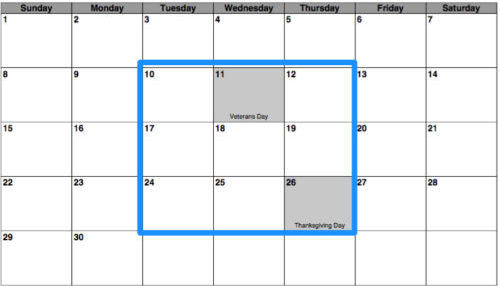Once the students understand the question, let them work in pairs to try to figure it out. The teacher can circulate through the classroom, asking students to explain their ideas, and, as necessary, providing hints to students who are having trouble finding traction with the problem.
Hint 1.
Just trying a bunch of examples and looking for patterns, either by listing or by coloring them in on a hundreds chart, can help a lot, especially if you organize the outcomes. If we try different squares on the November page above, we’ll get numbers like:
99 108 117
Shifting the square to the right seems to add 9.
Will this always work? Why would it? What would happen for different months?
Hint 2
There may be a way to see something if you use a 2 by 2 square instead of a 3 by 3 square.
Or you could try a 1 by 3 rectangle.
Hint 3
Maybe there’s a way to break the addition problem down into manageable pieces.
What if you added each row of the 3 by 3 square up, then added those sums? Or what if you added the columns first?

